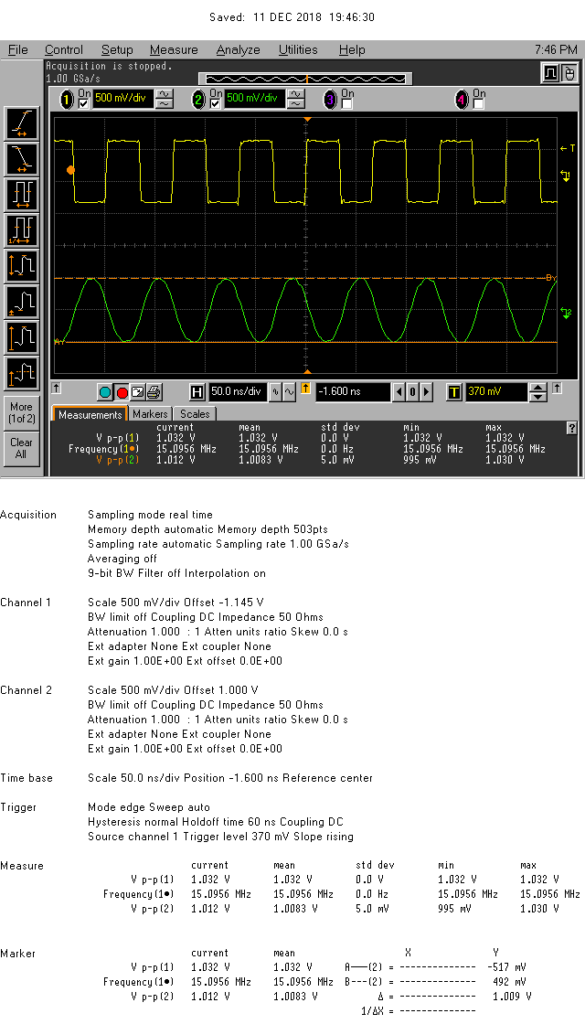It’s basic (signal processing) mathematics that square waves (or any waveform with sharp edges) carry harmonics that doesn’t die fast enough, therefore not band-limited. The more sudden the transition is, the more harmonics you need to preserve to faithfully represent a signal in practice.
Unless the signal itself is known to be band-limited (like sine waves, classical modulation schemes, SRRC), it puts the burden on the test instruments involved to provide large bandwidths and the matching high sampling rate (needs to do better than Nyquist).
The technology today provides generous bandwidths and sampling rates for oscilloscopes at reasonable prices, but synthesized function/waveform generators with the same bandwidth/sampling rate can easily cost 10 times if not even more. For the money to buy a used not-too-old 500Mhz pulse generator, you can buy a 4GHz 20GS/s oscilloscope!
For oscilloscopes, users are often aware that the rounded square waves/transitions they see on the screen is due to bandwidth limitations, and will account for the reality distortion in their mind. If your square wave clocks are pushing the sampling rate of the scope and the combined bandwidth between the scope and the probes, you should very well expect that you cannot catch much glitches and pretty much use the oscilloscope as a frequency counter or check for modulations.
For synthesized signal generators, bandwidth and samplers are way more precious. Oscilloscopes generally has 8-bit vertical resolution (256 steps), but synthesizers typically has 12-bit vertical resolution (4096 steps) or better. There are imperfect techniques trading vertical resolution and sampling rate, but there is no free lunch.
I have on my bench these 12-bit function generators:
- an old Analogic 2045B (roughly US$1300, 400Mhz, 800MS/s, 2Mpts) and
- a much more modern Agilent/HP 33120A (roughly US$600, 15Mhz, 40MS/s, 16Kpts)
that I’d like to illustrate the value of getting a higher bandwidth (and therefore higher sampling rate) unit. The 33120A has a much finer control over frequency/amplitude/offset steps (2045B only allows fixed point increments) and might have better noise characteristics and much smaller form factor considering Analogic 2045B is made in the 1970s and HP 33120A is made at least 20 years after that. I would have liked to keep only my 33120A or 33255B on my bench to save space, but once you’ve seen this screenshot, you’ll know why I’m still willing to cough up the space for 2045B:

The upper waveform (Channel 1, yellow) is a from Analogic 2045B while the lower waveform (Channel 2, green) is from HP 33120A. They are both set at around 15Mhz and you can see that when approaching the limit of the synthesizer, 33120A rounds off the square wave to almost a sinusoid. Square waves gets ugly quickly above 10Mhz and this is as far as 33120A is capable of.
On the other hand, the square waves are bang-on for 2045B, and is still decent at around 50Mhz (my BNC cable starts to come in question). That’s why it’s still worth getting a high bandwidth synthesized function generator even if your budget only allows for clumsy old models if you use your function generator for something more than sinusoids.
Note that function generators are typically designed to pump out to 50Ω loads and the amplitude displayed in the function generator (![]() ) assumed so. That’s why beginners gets confused why they read
) assumed so. That’s why beginners gets confused why they read ![]() when the function generators says
when the function generators says ![]() : the function generator sends out nearly double the voltage so the potential divider formed between the 50Ω output impedance of the function generator and the 50Ω load impedance will split the voltage into half. If you set your oscilloscope to 1MΩ load, you are getting
: the function generator sends out nearly double the voltage so the potential divider formed between the 50Ω output impedance of the function generator and the 50Ω load impedance will split the voltage into half. If you set your oscilloscope to 1MΩ load, you are getting ![]() , which is nearly
, which is nearly ![]() .
.
More importantly, if the load is not matched, the small capacitances in the chain will distort the waveform received by your oscilloscope severely at higher frequencies, so you can barely get a square wave at fundamental frequency above 2Mhz undistorted if you feed it into an oscilloscope with 1MΩ input impedance, while in reality the signal generator, cables, and oscilloscope can do much better.
Most cheap low bandwidth oscilloscopes (like 100Mhz) do not have 50Ω option. Nonetheless the impedance needs to be matched if you work with square waves at 2Mhz or above. Just buy a 50Ω feed-through BNC ‘termination’ adapter and plug it right at the 1MΩ input port. In reality, it’s a divider between 50Ω and (1MΩ//50Ω), with the scope seeing ![]() of
of ![]() . For all practical purposes the oscilloscope sees
. For all practical purposes the oscilloscope sees ![]() or
or ![]() .
.
With 50Ω feed-through BNC ‘termination’ adapters, make sure you work out the impedance matching if you split the signals if it’s not the simple nearly 1:1 potential divider halving the voltage. At low frequencies, the amplitudes will be off, but when you start going into Mhz range and above, your signal will be distorted badly as well.
![]()
![]()